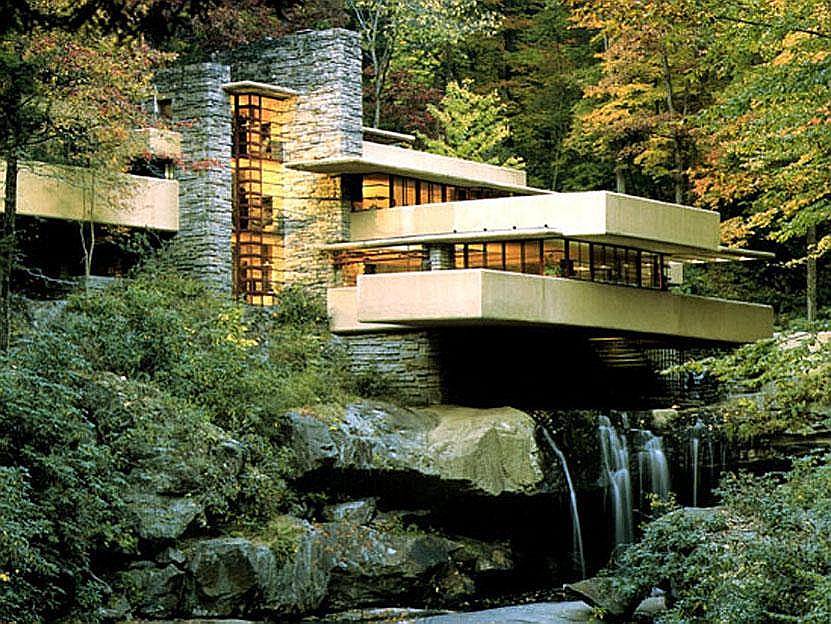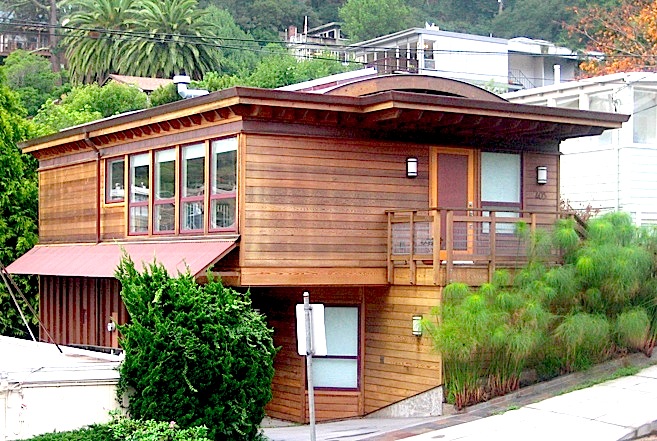|
SCRAPED! Anne & Lars Build a House |
|
Chapter 4: Architect |
|
You wouldn't know it from the absence of entries here, but we've been busy designing a house! It's easier than you might think. The basic steps are these:
1. Hire an architect 2. Empty your bank account Examination of some details might prove instructive. The main functionality is simple enough: we need space for two people, a couple of cats, and occasional guests. Anne needs dedicated office space that can be messy. I'd like a workshop -- even a small one -- but this is not essential. We want a rental apartment, to help recover from step 2 above. The town will thus require four off-street parking spaces, two per dwelling unit. The house must be achievable on a budget that's a few sizes too small. It must have liberal doses of natural light, and feature the bay views that inspired the purchase. The last two items might seem odd in a list of functional needs, but I go a little nuts living in a place without good light and views. So there they are. The non-functional stuff is harder to specify, but it's where the action is. We want a house that looks interesting and feels well crafted. It should be distinctive but not garish, informal but not goofy, tasteful but not pretentious. It should fit the street -- not too big, not too small. It should be warm & cozy, yet clean & uncluttered. It should feel coherent, but not rigid. It should accommodate change over time. Modern architecture is good at this, but we have no particular style requirement. Scale and formality are more meaningful drivers of how a house feels. It should be an appropriate response to the steeply sloping, wooded site, with good indoor/outdoor connections. It should meet our expectations, and surprise us a little. Like a few million other people, we'd like a new Fallingwater, the Depression-era masterpiece by Frank Lloyd Wright. Is it too much to ask that our house be the modern-day version of that which the American Institute of Architects called "the best American building of the last 125 years"? I think not! 
Frank Lloyd Wright's Fallingwater How will this happen? We've been amateur architecture students for a long time, and we've got some relevant experience under my belt. We think we can design a simple house from scratch. But ours will likely not be a simple house. The site demands are complex, and Sausalito's permit process is an unpredictable minefield. I went so far as to ask one of the town planners whether it was realistic for an amateur to handle his own design. She gave a little smile, then solemnly shook her head and said no, not really... There's a less practical but still vital argument against going it alone: we want a great house. We think that even a modest building should try to make its part of the world better. We don't want to put this much money, time, stress, and energy into something ordinary. On our own, we could make a good house. Possibly a very good one. But making a great house needs someone more talented than we are. So be it. Time to enlarge the team by one. But how -- which is to say, who? Like Fallingwater, most designs that we've really admired have been done by architects who long ago received their final permit of occupancy, if you know what I mean. We asked around, scoured 20 years of Fine Homebuilding back issues, and even knocked on a few doors. 
Sausalito house One of those doors is fastened to a house that sits between our current apartment and the bus stop. I walk past it about 10 times a week, admiring it each time. It's a smallish structure with interesting lines, crisp details, and nice street presence. It has style, but not a style. It will probably look as appealing several decades from now. Not everything we envision in our house is on display here, but it's definitely got something. (Tastes vary. I pointed it out to a friend once. He said "That one? Really?") The owners graciously welcomed me in, and spoke enthusiastically of their experience building and occupying the house. It turns out that the architect, one Barry Peterson, lives and works in Sausalito. That's good news! He's familiar with the permit process here. We looked him up, had a few conversations, saw more of his work, and gained confidence in his sensibilities and approach. We liked the cut of his jib. He revealed that not only has he been through the Sausalito design review mill, he was actually on the planning board for a time. More good news! The last straw: he studied at Taliesin, the architecture school founded by Frank Lloyd Wright. Fallingwater starts to seem a little less fantastical. Of course, we are not Pittsburgh department store magnates in the 1930s, so we might not actually get a waterfall underneath our house. Or will we? The spring that refreshed the first Spanish ships to enter San Francisco Bay now runs through a culvert under the Sausalito house above. And during heavy winter rains, I have witnessed substantial street runoff overflowing onto our new property. So you never know. In the meantime, we think we have the right man for the job. A big piece of the puzzle has fallen neatly into place, although it's odd to be in this position. At work and by nature, I like to sweat every detail. But somehow I feel fine handing over to a relative stranger the task of framing half our waking lives. So that's it for step 1. What about step 2? Well, it turns out that once step 1 is squared away, step 2 pretty much takes care of itself. Now here's a little bonus trivia: some of you have asked why this journal is called Scraped! There are a few reasons. In the first installment, we noted that we will demolish the current structure and replace it with a new one. In real estate lingo, the old house will be scraped. The second reason has to do with step 2 above -- when we are done with this project, our resources will be scraped clean, along with our emotional reserves and nerve endings, no doubt. So we really hope it works. We don't want to live out of our cars, parked next to a half-built house. The third reason is more subtle: the spectacular landscape of the Bay Area was formed by tectonic activity called subduction. During this process, as the Pacific Plate slid below the North American Plate, much of the rock on top was scraped off to create the sandstone hills and islands that give us the dramatic views we crave. Wonder no more! And don't miss our next entry -- you never know when we might actually look at some house designs... |